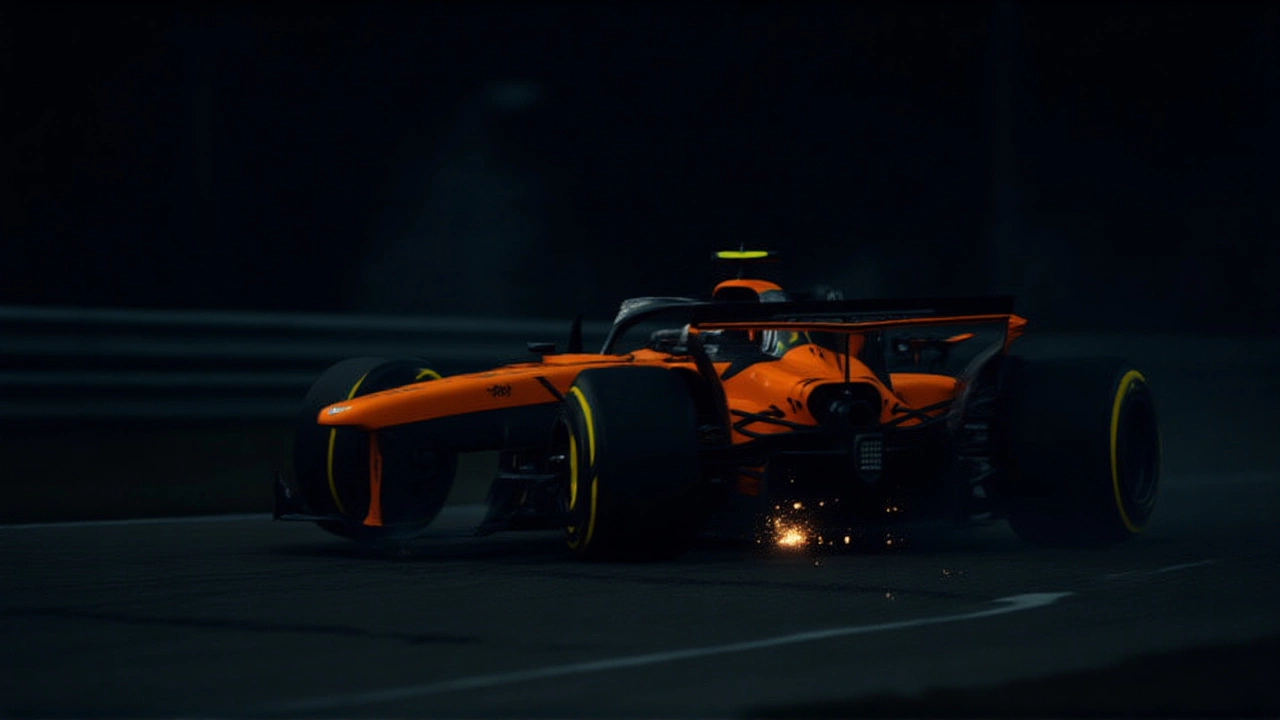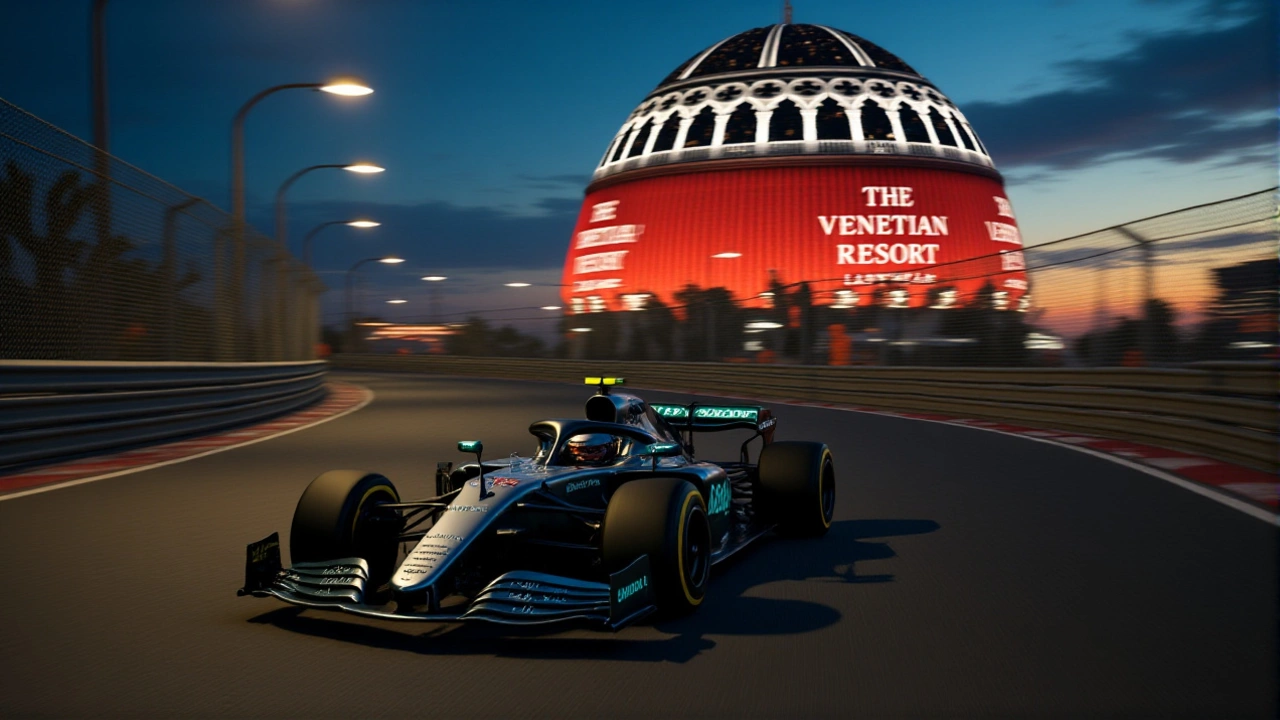McLaren stripped of Vegas results after skid-block breach
 Nov, 24 2025
Nov, 24 2025
When the checkered flag fell on the Las Vegas Grand Prix Las Vegas Strip Circuit on November 22, 2025, Lando Norris, Formula 1 driver for McLaren Racing Limited celebrated a strong second-place finish. Oscar Piastri, his teammate at McLaren Racing Limited was moments away from his first podium of the season in fourth. But by the next morning, both results were gone — erased by a measurement thinner than a human hair.
The 0.12 Millimeter That Changed Everything
The Fédération Internationale de l'Automobile (FIA) ’s technical delegates didn’t find evidence of deliberate cheating. No tampered parts. No hidden weights. Just wear — slightly more than allowed. Norris’s rear skid block measured 8.88mm and 8.93mm at key points; Piastri’s dipped as low as 8.74mm. The rule? Minimum 9mm. Every millimeter counts. And the FIA doesn’t bend on this one.
Here’s the thing: 0.12mm is less than the thickness of a credit card’s edge. But in Formula 1, where aerodynamics are tuned to microns and downforce is measured in grams, even that tiny breach triggers automatic disqualification. The Fédération Internationale de l'Automobile (FIA) made it clear: this wasn’t about intent. It was about compliance. As Defector.com put it, "It was bad luck, not cheating." But in F1, bad luck still costs you points.
Why the Skid Block Matters
The skid block — a wooden or composite plank bolted to the underside of the car — isn’t just a safety feature. It’s a crucial tool for enforcing the sport’s aerodynamic rules. If the car rides too low, it generates more downforce, which gives teams an unfair speed advantage. The 9mm minimum ensures all teams play by the same height restrictions. When the plank wears below that, it means the car was running dangerously close to the track surface — likely generating extra grip and cornering speed.
McLaren argued their MCL39 chassis suffered unexpected porpoising — a violent bouncing motion that intensified under the unique lighting and surface conditions of the Las Vegas Strip Circuit. They pointed to Free Practice 2 (FP2) on November 22, which was halted twice by a loose manhole cover, cutting their setup time by over 40 minutes. Without proper track time, they couldn’t fine-tune ride height. The result? A car that bottomed out more than planned.
A Season of Skid Block Disqualifications
This wasn’t an isolated incident. The 2025 season has become a graveyard for skid block violations. Earlier in the year, Lewis Hamilton was disqualified from the Chinese Grand Prix after his plank measured a staggering 0.5mm under limit. Nico Hülkenberg faced the same fate in Bahrain. Then came Charles Leclerc and Pierre Gasly — both disqualified for being underweight in Shanghai. That’s five disqualifications before Vegas. Now six.
What’s changed? Teams are pushing harder. The 2025 regulations tightened aerodynamic restrictions, forcing engineers to run cars lower than ever. The trade-off? More contact with the track. More wear. More risk. And with the championship fight this close, no team is holding back.

Championship Fallout: A Title Race Reborn
McLaren’s double disqualification cost them 30 championship points — 18 for Norris, 12 for Piastri. That’s not just a setback. It’s a seismic shift. Piastri, who led the drivers’ standings by 34 points in July, now has zero podiums in his last six races. Norris, once a title contender, is now five points behind Max Verstappen in the standings.
And Verstappen? He won Vegas. He didn’t just win — he dominated. With McLaren out of the picture, his lead over second place grew from 14 to 27 points. Suddenly, the title fight isn’t a three-horse race. It’s a two-horse sprint. And with only three races left — including the season finale at the Yas Marina Circuit in Abu Dhabi on November 30 — every point matters more than ever.
What’s Next for McLaren?
McLaren Racing Limited has stayed silent on whether they’ll appeal. That’s unusual. Teams usually protest immediately — especially when they believe the rules were applied inconsistently. But here, the FIA’s process was flawless: measurements taken in front of three McLaren reps, data logged, reviewed by three stewards. An appeal would be a long shot.
Still, insiders say McLaren’s legal team is quietly reviewing whether the FIA’s interpretation of "minimum thickness" accounts for dynamic wear caused by porpoising. If the rule doesn’t explicitly exclude unintentional, vibration-induced wear, then perhaps there’s a technical loophole. But that’s a high-risk gamble. Lose the appeal, and you risk a fine — or worse, a future penalty.
For now, McLaren’s focus is damage control. They’ve already begun redesigning the skid block mounting system for the final three races. Engineers are testing new dampers to reduce chassis oscillation. They’re also pushing for a rule clarification from the FIA — not to change the rule, but to clarify how dynamic wear is measured.

Why This Matters Beyond the Points
This isn’t just about who wins the championship. It’s about the soul of Formula 1. The sport prides itself on innovation — but also on fairness. The skid block rule exists to level the playing field. When teams push to the edge — and cross it by 0.12mm — it forces a question: Is this the cost of progress? Or is it a warning that we’ve gone too far?
For fans, it’s a reminder that F1 isn’t just about speed. It’s about precision. About margins. About the difference between glory and a footnote. And for McLaren, it’s a brutal lesson: in this sport, you don’t just need the fastest car. You need the most perfect one.
Frequently Asked Questions
How does this affect Lando Norris’s championship chances?
Norris lost 18 championship points, dropping him from second to fifth in the drivers’ standings. He’s now 27 points behind Max Verstappen with only three races left. While still mathematically in contention, he needs Verstappen to falter badly — and Norris himself to win every remaining race — to have a realistic shot. His momentum is gone, and his confidence may be shaken.
Why didn’t the FIA just fine McLaren instead of disqualifying them?
The 2025 Formula 1 Technical Regulations explicitly state that skid block violations below 9mm result in automatic disqualification. There’s no discretion for fines or penalties — it’s a binary rule. The FIA’s stance is clear: if you break the physical limit, you’re out. This prevents teams from gaming the system by accepting penalties as a cost of doing business.
Could McLaren have avoided this if FP2 hadn’t been interrupted?
Almost certainly. The loose manhole cover caused two red flags during FP2, cutting McLaren’s track time by 42 minutes. Without that, they could have tested ride height adjustments and dampening settings to reduce porpoising. Instead, they ran the race with a setup that was essentially untested — a gamble that backfired catastrophically.
Has any team ever appealed a skid block disqualification successfully?
Never. Since the skid block rule was introduced in 2001, every disqualification for under-threshold wear has stood. Even when teams argued environmental factors — like track temperature or debris — the FIA has consistently upheld the rule. The precedent is absolute: measurement is measurement. No exceptions.
What does this mean for the 2026 Formula 1 regulations?
Expect changes. Teams are already lobbying for a more nuanced rule — perhaps allowing a small tolerance for dynamic wear or requiring real-time telemetry monitoring. The FIA may also introduce a "porpoising compensation" clause. But don’t expect it before 2026. For now, the 9mm rule stands — and so does the message: in F1, even the tiniest violation has massive consequences.
Is this the end of McLaren’s 2025 title hopes?
In practical terms, yes. Even if Norris and Piastri win all three remaining races, they’d need Verstappen to score zero points — and finish outside the top five — to overtake him. The math is impossible. McLaren’s focus has shifted from winning the drivers’ title to holding off Red Bull in the constructors’ championship — and even that now looks unlikely.